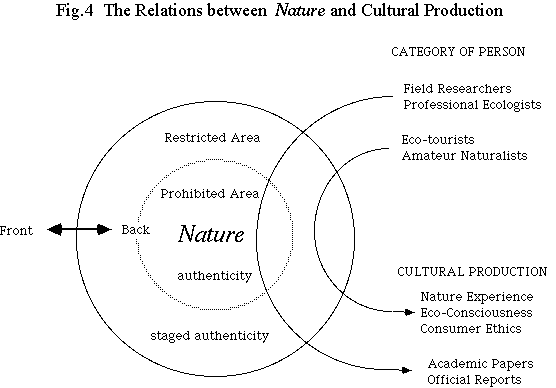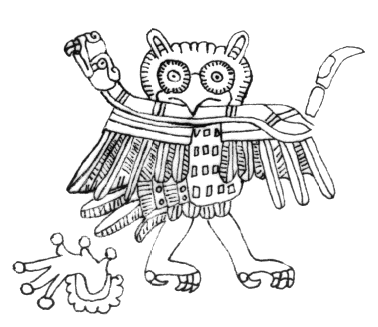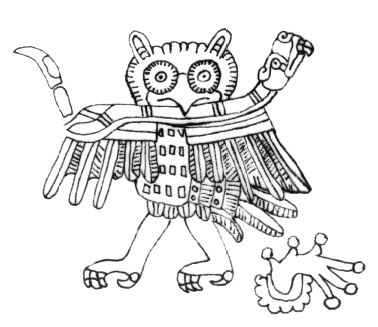様々なリアリティついて
On various realities
様々なリアリティついて
On various realities
☆サブスタンシャル/ヴァーチャルという二項対立と、現実/可能という二項対立の四象限から
なる意味の空間のなかで、身体の諸相を説明すると上記 のよ うになる(→「様々なリアリティついて」)。すなわち、
【現実】×【ヴァーチャル】:ネット上の身体意識、攻殻機動隊のゴースト
【可能】×【ヴァーチャル】:人工知能と称するもの、2001年宇宙の旅の登場「人物」HAL-9000
【現実】×【サブスタンシャル】:生身の身体
【可能】×【サブスタンシャル】:サイボーグ化するコギトと しての私(→「仮想と実
質」)。
| Substantial Realtity |
Reality
is the sum or aggregate of all that is real or existent, as opposed to
that which is only imaginary. The term is also used to refer to the
ontological status of things, indicating their existence.[1] In
physical terms, reality is the totality of the universe, known and
unknown.[2] Philosophical questions about the nature of reality or
existence or being are considered under the rubric of ontology, which
is a major branch of metaphysics in the Western philosophical
tradition. Ontological questions also feature in diverse branches of
philosophy, including the philosophy of science, philosophy of
religion, philosophy of mathematics, and philosophical logic. These
include questions about whether only physical objects are real (i.e.,
Physicalism), whether reality is fundamentally immaterial (e.g.,
Idealism), whether hypothetical unobservable entities posited by
scientific theories exist, whether God exists, whether numbers and
other abstract objects exist, and whether possible worlds exist. - wiki |
現実(げんじつ)とは、実在また
は存在するすべてのものの総体または集合体であり、想像上のものにすぎないのとは対照的である。物理学的な用語では、現実とは、既知および未知の宇宙の全
体である[2]。現実や存在、存在の本質に関する哲学的な疑問は、西洋哲学の伝統における形而上学の主要な一分野である存在論の下で検討される。存在論的
な問いは、科学哲学、宗教哲学、数学哲学、哲学的論理学など、哲学のさまざまな分野でも扱われる。物理的な物体だけが実在するのか(物理主義)、現実は基
本的に非物質的なのか(観念論)、科学理論が仮定する仮定の観測不可能な実体は存在するのか、神は存在するのか、数やその他の抽象的な物体は存在するの
か、可能世界は存在するのか、などである。 |
| Virtual reality, VR |
Virtual reality (VR)
is a simulated experience that can be similar to or completely
different from the real world. Applications of virtual reality can
include entertainment (i.e. gaming) and educational purposes (i.e.
medical or military training). Other, distinct types of VR
style technology include augmented reality and mixed reality./
Currently standard virtual reality systems use either virtual reality
headsets or multi-projected environments to generate realistic images,
sounds and other sensations that simulate a user's physical presence in
a virtual environment. A person using virtual reality equipment is able
to look around the artificial world, move around in it, and interact
with virtual features or items. The effect is commonly created by VR
headsets consisting of a head-mounted display with a small screen in
front of the eyes, but can also be created through specially designed
rooms with multiple large screens. Virtual reality typically
incorporates auditory and video feedback, but may also allow other
types of sensory and force feedback through haptic technology. |
バーチャルリアリティ(VR)と
は、現実世界と似ていることもあれば、まったく異なることもある疑似体験のことである。バーチャルリアリティの用途には、娯楽(ゲームなど)や教育目的
(医療や軍事訓練など)がある。現在、標準的なバーチャルリアリティシステムは、バーチャルリアリティヘッドセットまたはマルチプロジェクション環境のい
ずれかを使用して、バーチャル環境におけるユーザーの物理的存在をシミュレートするリアルな画像、音、その他の感覚を生成する。バーチャル・リアリティ機
器を使用する人は、人工的な世界を見て回り、その中で動き回り、バーチャルな機能やアイテムと相互作用することができる。この効果は、目の前に小さなスク
リーンがあるヘッドマウントディスプレイからなるVRヘッドセットによって作り出されるのが一般的だが、複数の大きなスクリーンを備えた特別に設計された
部屋によって作り出されることもある。バーチャル・リアリティは通常、聴覚と映像によるフィードバックを取り入れているが、触覚技術によって他の種類の感
覚や力のフィードバックを可能にすることもある。 |
| Augmented reality, AR |
"Augmented
reality
(AR) is an interactive experience of a real-world environment where
the
objects that reside in the real world are enhanced by
computer-generated perceptual information, sometimes across multiple
sensory modalities, including visual, auditory, haptic, somatosensory
and olfactory.[1][2] AR can be
defined as a system that fulfills three
basic features: a combination of real and virtual worlds, real-time
interaction, and accurate 3D registration of virtual and real
objects.[3] The overlaid sensory information can be constructive (i.e.
additive to the natural environment), or destructive (i.e. masking of
the natural environment).[4] This experience is seamlessly interwoven
with the physical world such that it is perceived as an immersive
aspect of the real environment.[4] In this way, augmented reality
alters one's ongoing perception of a real-world environment, whereas
virtual reality completely replaces the user's real-world environment
with a simulated one.[5][6] Augmented reality is related to two largely
synonymous terms: mixed reality and computer-mediated reality." - Wiki. |
拡張現実(AR)とは、現実世界
に存在するオブジェクトが、コンピュータによって生成された知覚情報によって拡張される、現実世界環境のインタラクティブな体験であり、視覚、聴覚、触
覚、体性感覚、嗅覚など、複数の感覚モダリティにまたがることもある。ARは、現実世界と仮想世界の組み合わせ、リアルタイムのインタラクション、仮想オ
ブジェクトと現実オブジェクトの正確な3D登録という3つの基本特徴を満たすシステムとして定義できる。オーバーレイされた感覚情報は、建設的(つまり自
然環境に付加的)であることもあれば、破壊的(つまり自然環境をマスキングする)であることもある。この体験は物理的世界とシームレスに織り込まれ、現実
環境の没入的側面として知覚される。このように、拡張現実は現実世界の環境に対するユーザーの知覚を変化させるが、バーチャルリアリティはユーザーの現実
世界の環境をシミュレートされたものに完全に置き換える。 |
| Haptics | Haptic technology,
also known as kinaesthetic communication or 3D touch,[1] refers to any
technology that can create an experience of touch by applying forces,
vibrations, or motions to the user.[2] These technologies can be used
to create virtual objects in a computer simulation, to control virtual
objects, and to enhance remote control of machines and devices
(telerobotics). Haptic devices may incorporate tactile sensors that
measure forces exerted by the user on the interface. The word haptic,
from the Greek: ἁπτικός (haptikos), means "pertaining to the sense of
touch". Simple haptic devices are common in the form of game
controllers, joysticks, and steering wheels. - Wiki |
ハプティクス(haptics)と
は、利用者に力、振動、動きなどを与えることで皮膚感覚フィードバックを得るテクノロジーである[1]。触覚技術(英: haptic
technology)とも。そのような機械的刺激をコンピュータシミュレーション内で仮想オブジェクトを作る補助として使うことができ、仮想オブジェク
トを制御したり、機械などの遠隔制御(テレロボティクス(英語版))を強化したりできる。「視覚におけるコンピュータグラフィックスと同じ役割を皮膚感覚
で果たす」と説明されてきた[2]。ハプティクスを応用したデバイスは、そのインタフェース上にユーザーが与える力を計測するセンサを組み込んでいること
もある。 |
| Internet meme |
"An Internet meme, commonly known as simply a meme (/miːm/ MEEM), is an activity, concept, catchphrase, or piece of media that spreads, often as mimicry or for humorous purposes, from person to person via the Internet. An Internet meme usually takes the form of an image (traditionally an image macro), GIF or video. It may be just a word or phrase, sometimes including intentional misspellings, (such as in lolcats) or corrupted grammar, as in doge and "All your base are belong to us". These small movements tend to spread from person to person via social networks, blogs, direct email, or news sources. They may relate to various existing Internet cultures or subcultures, often created or spread on various websites. Fads and sensations tend to grow rapidly on the Internet because the instant communication facilitates word of mouth transmission. Some examples include posting a photo of people lying down in public places (called "planking") and uploading a short video of people dancing to the Harlem Shake."- Wiki. | 「インターネット・ミームとは、一般に
ミーム(/miːm/meem)と呼ばれる活動、概念、キャッチフレーズ、またはメディアの一部であり、多くの場合、模倣として、またはユーモアを目的と
して、インターネットを介して人から人へと広がっていく。インターネット・ミームは通常、画像(伝統的には画像マクロ)、GIF、動画の形をとる。単語や
フレーズだけの場合もあり、意図的なスペルミス(lolcatsなど)や、dogeや "All your base are belong to
us
"のように文法が乱れている場合もある。このような小さなムーブメントは、ソーシャルネットワーク、ブログ、ダイレクトメール、ニュースソースを介して人
から人へと広がっていく傾向がある。既存の様々なインターネット文化やサブカルチャーに関連することもあり、様々なウェブサイトで作られたり広まったりす
ることが多い。流行や感覚は、インスタント・コミュニケーションによって口コミで伝わりやすくなるため、インターネット上で急速に成長する傾向がある。例
えば、公共の場で人々が寝そべっている写真(「プランキング」と呼ばれる)を投稿したり、ハーレムシェイクに合わせて踊る人々の短いビデオをアップロード
したりすることが挙げられる。" |
| Hume
AI |
A New York-based
startup, Hume AI, unveiled a groundbreaking AI voice interface, the
Empathic Voice Interface (EVI), designed to mimic human emotions and
engage in more natural conversations with users. This emotionally
intelligent AI can be integrated into various applications, spanning
customer service, healthcare, and virtual and augmented reality
environments. Following a successful funding round of $50 million led
by EQT Ventures, the beta version of EVI has been launched to the
public. Unlike conventional AI systems guided by superficial human ratings, Hume AI’s approach involves training the AI to understand user preferences and generate vocal responses optimised for user satisfaction. By learning directly from proxies of human happiness and continuously updating its knowledge with each interaction, EVI aims to reconstruct human preferences from first principles, thus enhancing its ability to engage with users effectively. Its empathic Large Language Model (eLLM) is central to Hume AI’s innovation, which integrates multimodal generative AI with expression measures. This model enables EVI to adjust its language and tone based on context and the user’s emotional expressions, creating a more personalised and engaging conversational experience. The voice model was trained on extensive data from millions of human interactions, enhancing its ability to effectively understand and respond to users’ needs. https://dig.watch/updates/hume-ai-unveils-emotionally-intelligent-ai-voice-interface |
ニューヨークを拠点とする新興企業ヒュー
ムAIは、人間の感情を模倣し、ユーザーとより自然な会話をするように設計された画期的なAI音声インターフェース「Empathic Voice
Interface(EVI)」を発表した。この感情インテリジェントAIは、カスタマーサービス、ヘルスケア、仮想現実や拡張現実環境など、さまざまな
アプリケーションに統合することができる。EQTベンチャーズが主導する5,000万ドルの資金調達ラウンドの成功を受けて、EVIのベータ版が一般公開
された。 人間の表面的な評価に誘導される従来のAIシステムとは異なり、ヒュームAIのアプローチでは、ユーザーの好みを理解し、ユーザーの満足度に最適化された 音声応答を生成するようにAIを訓練する。EVIは、人間の幸福度の指標から直接学習し、インタラクションのたびにその知識を継続的に更新することで、人 間の嗜好を第一原理から再構築し、ユーザーと効果的に関わる能力を高めることを目指している。 共感的ラージ・ランゲージ・モデル(eLLM)は、ヒュームAIのイノベーションの中核をなすもので、マルチモーダル生成AIと表情尺度を統合している。 このモデルにより、EVIは文脈とユーザーの感情表現に基づいて言語とトーンを調整し、よりパーソナライズされた魅力的な会話体験を生み出すことができ る。この音声モデルは、何百万もの人間との対話から得られた膨大なデータに基づいて訓練され、ユーザーのニーズを効果的に理解し対応する能力を高めてい る。 |
| Virtual reality 2.0 |  「デ イヴィッド・ヒューム(David
Home; 7 May 1711 NS (26 April 1711 OS) - 25 August
1776)は、スコットランドの啓蒙主義の哲学者、歴史家、経済学者、司書、エッセイストで、哲学的経験主義、懐疑主義、自然主義という非常に影響力の大
き
な体系で今日最もよく知られている人物である。『人間本性論』(1739-40)を皮切りに、ヒュームは人間性の心理的根拠を検証する自然主義的な人間科
学の創造に努めた。ヒュームは、生得的な観念の
存在に反対し、人間の知識はすべて経験のみから得られると主張した。これはフランシス・ベーコン、トーマス・ホッブズ、ジョン・ロック、ジョージ・バーク
レーと共にイギリスの経験主義者と位置づけられる。
ヒュームは帰納的推論と因果関係の信念は合理的に正当化することができず、その代わりに習慣と精神的な習慣から生まれると主張した。私たちはある事象が別
の事象を引き起こすことを実際に認識することはなく、事象の「一定の連関」を経験するだけである。この帰納法の問題は、過去の経験から因果関係を推論する
ためには、未来が過去と似ていることを前提にする必要があり、この前提自体が過去の経験に基づくことができないことを意味している。
哲学的合理主義者の反対者であるヒュームは、人間の行動を支配するのは理性よりもむしろ情熱であるとし、「理性は情熱の奴隷であり、またそうでなければな
らない」と有名に宣言していた」(→ドゥールズ派ヒューム)。 「デ イヴィッド・ヒューム(David
Home; 7 May 1711 NS (26 April 1711 OS) - 25 August
1776)は、スコットランドの啓蒙主義の哲学者、歴史家、経済学者、司書、エッセイストで、哲学的経験主義、懐疑主義、自然主義という非常に影響力の大
き
な体系で今日最もよく知られている人物である。『人間本性論』(1739-40)を皮切りに、ヒュームは人間性の心理的根拠を検証する自然主義的な人間科
学の創造に努めた。ヒュームは、生得的な観念の
存在に反対し、人間の知識はすべて経験のみから得られると主張した。これはフランシス・ベーコン、トーマス・ホッブズ、ジョン・ロック、ジョージ・バーク
レーと共にイギリスの経験主義者と位置づけられる。
ヒュームは帰納的推論と因果関係の信念は合理的に正当化することができず、その代わりに習慣と精神的な習慣から生まれると主張した。私たちはある事象が別
の事象を引き起こすことを実際に認識することはなく、事象の「一定の連関」を経験するだけである。この帰納法の問題は、過去の経験から因果関係を推論する
ためには、未来が過去と似ていることを前提にする必要があり、この前提自体が過去の経験に基づくことができないことを意味している。
哲学的合理主義者の反対者であるヒュームは、人間の行動を支配するのは理性よりもむしろ情熱であるとし、「理性は情熱の奴隷であり、またそうでなければな
らない」と有名に宣言していた」(→ドゥールズ派ヒューム)。 |
元
祖・懐疑論者のディヴィッド・ヒュームに 言わせれば、我々のリアル・リアリティというものは、ヴァーチャル・リアリティで
あり、眼球をまぶたの側からそっと押さえつけるだけで、目に見える世界は
歪んでみえ、我々がみている情報はすべて、脳で処理された画像を感じ取っているにすぎない。手に触ったという事実ですら、脳が手の情報をそのように処理し
ているにすぎない。もっとも、ヒュームの懐疑論は、哲学的省察に必要なものであり、日常生活に懐疑論をいちいち持ち込むなという意見もある(→「理性の綱渡り」「ヴァー
チャル・リアリティ」) 日本語のウィキペディアにはこうある:「ヴァーチャル・リアリティ」あるいは「バーチャル・リアリティ(英: virtual reality, VR)とは、現物・実物(オリジナル)ではないが機能としての本質は同じであるような環境を、ユーザの五感を含む感覚を刺激することにより理工学的に作り 出す技術およびその体系」。この定義は、「技術やその体系」が何を示しているのか不明瞭なため、完全に役立たずの定義である。むしろ有害であるといっても よい。 英語は多少まともか、VRは「実際の世界と類似のあ るいは完全に異なる、あるシミュレート[偽装化]された経験」とクリアに定義している。つまり、 "Virtual reality (VR) is a simulated experience that can be similar to or completely different from the real world. Applications of virtual reality can include entertainment (i.e. video games) and educational purposes (i.e. medical or military training). Other, distinct types of VR style technology include augmented reality and mixed reality." - virtual reality. バーチャルリアリティ(VR)とは、現実世界と似ていることもあれば、 まったく異なることもある疑似体験のことである。バーチャルリアリティの用途には、娯楽(ビデオゲームなど)や教育目的(医療や軍事訓練な ど)がある。VRスタイルの技術には他に、拡張現実(AR)や複合現実(MR)などがある。(→2つの経験の融合あるいは混同のことを「ヴァーチャルリアリティ」と呼ぶ) |
︎▶反
復と差異▶︎︎▶︎▶︎︎▶︎▶︎︎▶︎▶︎︎▶︎▶︎︎▶︎▶︎︎▶︎▶︎︎▶︎▶︎︎▶︎▶︎︎▶︎▶︎
ブーアスティン(一九六四)は、現代の観光は「疑似 イベント」になってしまったと批判した。その箇所のタイトル「旅行者から観光客へ」が示すように、ブーアスティンは偽の体験をさせられている観光客の主体 性の喪失を嘆く。
この見解を批判したのはディーン・マッカネルであ る。彼は、疑似イベントは観光の社会関係が生んだものであり、むしろ観光客自身はオーセンティシティ(authenticity)つまり真正でリアルな 「本物」を求めているのだと主張する(MacCannell 1976:103-4)。マッカネルの本物に関する議論は、社会学者ゴフマンの役割理論における<おもて>と<うら>という2つの領域の区分を導入する。 日常生活を演劇論的な観点から分析するなかでゴフマンは言う。演技者は、舞台の<おもて>と舞台の<うら>の両方を行き来できるが、観客が見聞きできるの は<おもて>の部分だけである。<うら>の領域は隠されているが観客はそれを覗きたがるものである。なぜなら<うら>には本物があると思われているから だ。社会的リアリティを確固とするためには、ある種の神秘化が必要なのだ、とマッカネルは言う(MacCannell 1976:93)。だからマッカネルの関心は観光客の本物の探究のプロセスにあるのではなく、近代社会において本物が隠される神秘化とその暴露の弁証法的 プロセスにある。
さて観光客は、舞台裏のリアルな世界(=本物)を目 的地において覗こうとする。
しかし、<うら>を見せることは普段の生活の中では 許されず、観光地の人びともそれを拒否する。そのために観光業者たちは観光客に舞台裏を見せる操作つまり演出をおこなう。このような加工によって観光客に 提示されるのがマッカネルの言う「演出された本物」(staged authenticity)である。彼は、人びとに対して「演出された本物」が提示される例として、消防署や工場や銀行などへの児童向けの社会見学や、ふ だん訪れることのできないケープ・ケネディ宇宙センターへの観光などをあげている。立入禁止の領域に入ることを、そのような社会見学や観光は可能にする。 だが児童や観光客が入っているのは実際の業務がおこなわれる空間ではあるが、その空間でおこなわれる現実の業務そのものは含まれていなかったり、制限され たものになっている。つまり観光客に見せられるものは、ゴフマンの言うところの<うら>の舞台ではなく「演出された」<うら>の領域だというわけだ。マッ カネルによればこの「演出された」<うら>の領域は、いまだ分析用語が与えられていない、言わば「生きた博物館の類のもの」であるという (MacCannell 1976:98-99)。
例えばエコ・ツアー(エコロジカル・ツーリズム、生 態観光)での自然はすべてが本物であり「演出された本物」などはないと言えるだろうか。対象となっている「自然」の本物性について考えよう。自然保護区の 物理的および認識論的な空間区分について注意すれば明白なように、「自然」は不均質な空間である。自然公園の多くは、観光客に公開している部分と非公開の 区域があり、観光客は許可された部分しか歩くことはできない。エコ・ツーリストに開放されている空間とは、管理者や科学者だけが歩ける空間(=本物)とは 区分されている。

Source: https://navymule9.sakura.ne.jp/eco-tur-CR.htm
観光に開放されているのは「演出された本物」の空間 である(図の左の同心円部分)。エコ・ツーリストたちはこのことを全く知らないわけではない。彼らは禁止区域があることを知っている。ガイドや管理者は、 禁断の地域を科学研究のために保存されている大切な場所であると説明する。エコ・ツーリストたちはそのサンクション(規約や規約の価値)を守ることが正し い振る舞いであることを学ぶ。本物の神秘化と「演出された本物」を通して<自然>という空間が秩序づけられている。
次にツアーそのものの本物性について考えよう。エ コ・ツーリストにとっての本物はもっと身近なものである。それは「自然」にとけ込んだ人工物の姿だ。コスタリカ中部の熱帯雲霧林の中にある高級エコ・ツ アーの「電気のない五つ星のホテル」と称されたロッジはジャングルの中の「自然」にとけ込むように設計されている。お湯のシャワーはソーラーシステムで暖 められる。「全てのエコツーリズムがここにある」と紹介する観光客向けの新聞記事は、エコ・ツアーに憧れる観光客に対して本物のエコ・ツアーが何であるか を、そこから排除されるものを通して表現する。「時に勘違いしたゲストがテニスラケットとドライヤーを持ち、カラーテレビとルームサービスを求めてやって 来るが、ここはリゾートではありません」(Costa Rica Today、一九九四年一月一三日付)。
観光客に提供される「演出された本物」と本物の倒錯 した例をエクアドルのエコ・ツアーにみることができる(Colvin 1994)。エクアドルのアマゾン上流の先住民チキュアのコミュニティには、彼ら自身が運営するエコ・ツアーがある。このツアーは先住民のガイドとともに 熱帯雨林の中で、現地の民芸品製作を観察し、神聖な儀礼に参加することを売りものにしている。これらの一連の儀礼は観光用に開催されるものであるから「演 出された」性格を有する——専門のシャーマンがおこなうのでもちろん虚構ではない。より興味深いのはエコ・ツーリストたちの取り扱い方にある。ゲストに熱 帯雨林の「本物」の生活を体験してもらうために、住民たちは観光客たちを伝統的な竹造りで茅葺きのロッジに泊まらせ、夜には蝋燭で明かりをとるようにさせ る。しかし当の先住民はブロック造りでトタン葺きの住宅に自家発電で電灯を引いて生活しているのだ。ここで、エコ・ツーリストの要求に応えて造り上げられ た「演出された本物」をイパーリアルな複製つまり「シュミラークル」(ボードリヤール、一九八四)とみなし、この現象全体を消費社会が行き着く反ユートピ アとして見ることは妥当ではない。私は「演出された本物」の制作を先住民の生存のための生産行為として見る可能性を提示したい。その根拠は「演出された本 物」が、現実でも虚構でもないあり得るべき「本質」を表象するものとして、先住民にも観光客にも受け入れられているからである。ここでは「演出された本 物」は両者の間での合意を意味する。
リンク
文献
その他の情報
Do not copy and paste, but you might [re]think this message for all undergraduate students!!!


++
Copyleft, CC, Mitzub'ixi Quq Chi'j, 1996-2099
☆
 ☆
☆